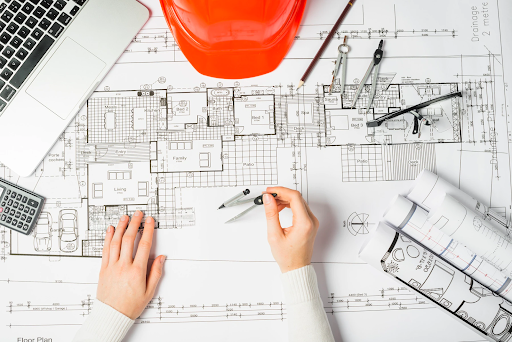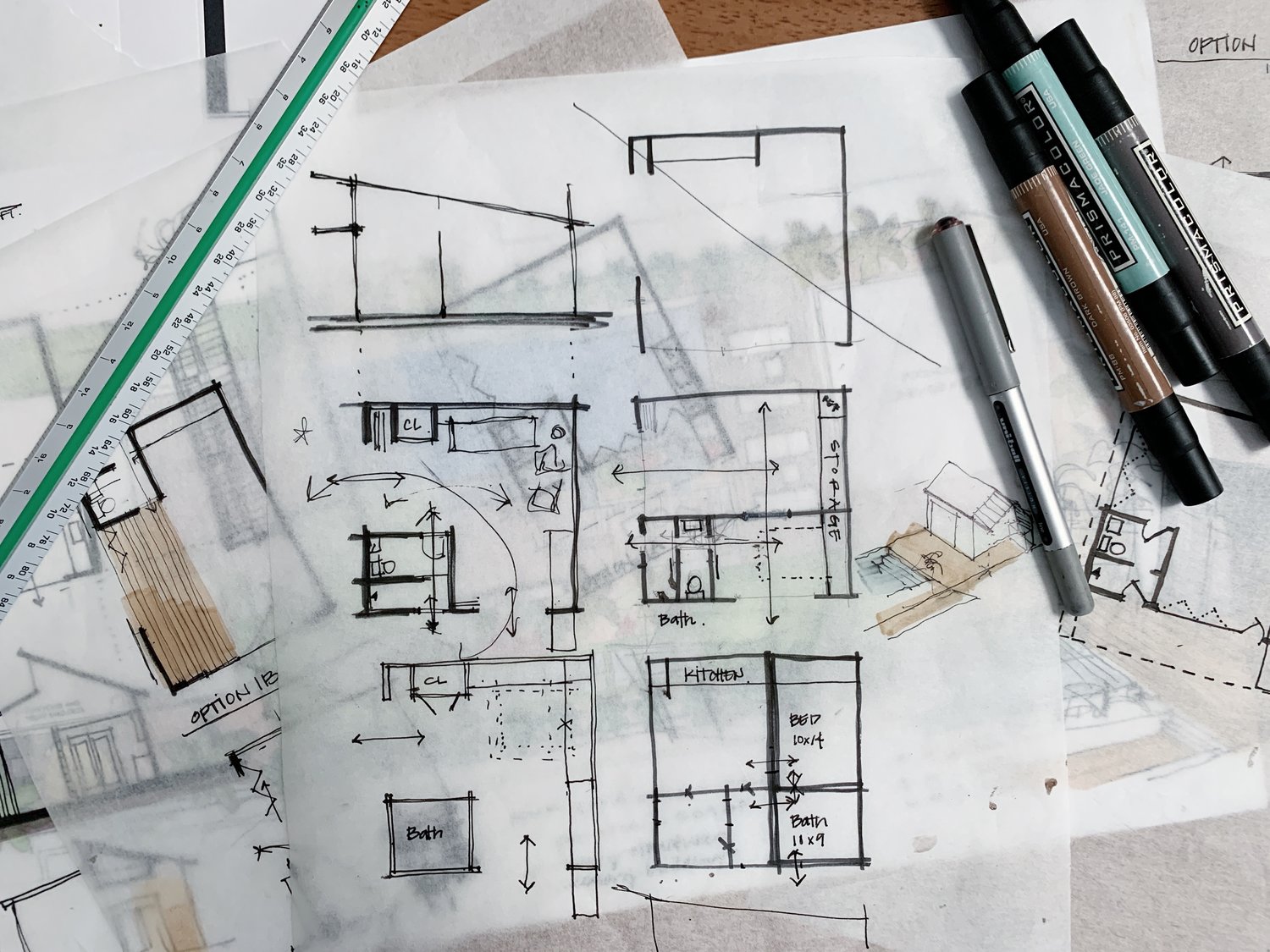Understanding the Diverse Occupation Paths Available for Aspiring Architect
As an aspiring Architect, you have a globe of job courses waiting for you. Whether you're attracted to standard style or the subtleties of lasting design, there's a specific niche that aligns with your passions.
Standard Architecture: Creating Buildings and Structures
Typical architecture concentrates on creating buildings and frameworks that mix capability with aesthetic appeal. As you discover this field, you'll appreciate the detailed balance between kind and objective. You'll discover to attract motivation from historical designs, integrating components like balance, materials, and workmanship. Your styles can show social heritage, showcasing local practices while satisfying modern-day requirements.
You'll create skills in preparing, model-making, and website analysis, allowing you to imagine and connect your ideas successfully. Involving with customers, you'll need to comprehend their vision and equate it right into possible layouts.
Additionally, constructing codes and sustainability practices are necessary in your job, guaranteeing your frameworks are environmentally friendly and safe. As you grow in your profession, you'll discover chances in household, business, and even restoration projects, each offering unique challenges. Embracing traditional architecture paves the way for a fulfilling career that admires the past while forming the future.
Urban Planning: Shaping Communities and Public Spaces
As an aspiring Architect, you can play an important role as an urban organizer, changing exactly how neighborhoods function and interact. By utilizing neighborhood engagement strategies, you'll assure that homeowners have a voice fit their atmosphere. And also, incorporating sustainable design concepts will certainly help create rooms that not only fulfill today's demands however also shield the future.
Function of Urban Planners
While numerous could think about architects as the sole enthusiasts behind structures, metropolitan planners play a crucial function fit the more comprehensive landscape of neighborhoods and public rooms. They examine land use, zoning regulations, and community requires to create lasting environments that improve quality of life. By teaming up with various stakeholders, you'll assist design parks, transport systems, and suburbs that advertise social interaction and accessibility. Urban coordinators additionally concentrate on environmental factors to consider, ensuring that advancements incorporate green areas and assistance biodiversity. Your competence in spatial layout and community characteristics permits you to envision future growth while protecting social heritage. In this important duty, you'll straight influence how people experience their environments, making every task an opportunity for positive modification.
Area Involvement Approaches
Reliable neighborhood interaction methods are important for metropolitan planners to guarantee that the voices of residents are listened to and valued in the preparation process. To foster purposeful discussion, you must focus on open online forums and workshops where community members can share their concepts and issues. Usage studies and social networks to reach a more comprehensive target market, guaranteeing varied point of views are included. Teaming up with regional organizations can boost depend on and assist in deeper links. It is necessary to provide clear details regarding proposed jobs and decision-making processes, allowing citizens to feel enlightened and empowered. By proactively incorporating and paying attention comments, you'll develop areas that reflect the community's needs, ultimately bring about more sustainable and effective urban atmospheres. Welcome transparency and constant discussion for long lasting influence.
Sustainable Design Principles
When designing city rooms, integrating sustainable layout concepts is important for producing settings that prosper both ecologically and socially. Consider incorporating eco-friendly spaces, like parks and yards, to enhance biodiversity and boost air high quality.
Creating with water preservation in mind is also vital-- believe about rainfall gardens and absorptive surfaces to take care of stormwater. Including community participants during the preparation process assurances that the spaces you produce meet their requirements and encourage social communication. By embracing these concepts, you'll add to lively, sustainable metropolitan landscapes that profit everybody.

Landscape Design: Developing Sustainable Exterior Environments
As you explore landscape style, you'll discover necessary design principles that produce practical and attractive outdoor spaces. Sustainable methods play a vital role in making certain these environments flourish while decreasing ecological influence. And also, you'll locate a variety of job chances that allow you to make a genuine difference in how people connect with nature.
Layout Principles in Landscape
Understanding layout concepts in landscape style is necessary for creating sustainable outside settings that balance with nature. You'll require to contemplate elements like percentage, scale, and balance to assure your styles really feel natural and welcoming. Incorporating indigenous plants not only boosts biodiversity yet also reduces water use, making your landscape resistant. Consider the flow of room and exactly how people engage with it; pathways and seating areas must invite exploration and relaxation. Additionally, focus on seasonal changes, making with products that enhance the environments year-round (Architect). By prioritizing sustainability and aesthetic appeals, you can create outside spaces that enhance the area and advertise health. Welcoming these principles will set a strong structure for your occupation in landscape style.
Sustainable Practices Review
Lasting practices in landscape style not only focus on looks however likewise prioritize ecological wellness and resource preservation. You can design rooms that advertise soil wellness, such as using natural products and exercising permaculture concepts. Ultimately, these techniques guarantee your layouts profit both individuals and the environment for years to come.
Occupation Opportunities Expedition
With a strong foundation in sustainable techniques, landscape design offers a variety of job paths that permit you to make a significant influence on the atmosphere. You might function as a landscape developer, producing aesthetically pleasing and practical outside spaces, or concentrate on environmental reconstruction, aiding to revitalize damaged communities. Urban planners frequently collaborate with landscape designers to produce environment-friendly rooms in urban setups, enhancing city livability. If you're passionate about education, take into consideration becoming a landscape architecture educator, inspiring future generations. Furthermore, you might deal with nonprofits focused on ecological sustainability or take part in study to introduce new techniques. Each path not only shapes stunning environments but additionally promotes a healthier earth for future generations.
Sustainable Design: Concentrating On Eco-Friendly Practices
As you discover your profession in architecture, embracing green techniques can set you apart in an affordable area. Sustainable layout focuses on producing buildings that lessen ecological influence while boosting resident health. By including sustainable products, energy-efficient systems, and lasting structure strategies, you'll add to a greener future.
Begin by getting understanding of eco-friendly accreditations like click to read LEED or BREEAM, which can strengthen your qualifications. Take my blog into consideration exactly how natural light, air flow, and thermal effectiveness can optimize style. Collaborate with designers and environmental professionals to innovate services that lower waste and conserve resources.
Do not forget the value of community participation-- appealing regional stakeholders can motivate styles that harmonize with the atmosphere. As clients progressively focus on sustainability, your proficiency in green methods will certainly not only bring in jobs but likewise satisfy your interest for responsible architecture. Accept this important facet of the profession, and watch your profession thrive.
Historic Conservation: Protecting and Recovering Cultural Heritage
While you begin on your architectural journey, take into consideration the essential duty of historical preservation in keeping our social heritage. This field concentrates on the security and restoration of significant structures, sites, and frameworks that tell the tales of our past. By taking part in historic preservation, you'll assist protect the building legacy that forms area identification.
As a historic preservation Architect, you'll examine historic significance and evaluate the problem of frameworks. You'll function carefully with historians and conservationists to guarantee authentic restoration techniques are utilized. This career path enables you to mix imagination with study, allowing you to design solutions that appreciate initial products and workmanship.
Your work not just check out this site adds to sustainability by reusing existing buildings however additionally cultivates a sense of pride within areas. Embracing this path will certainly assist you end up being a guardian of background, preserving the tales and aesthetics that enrich our lives.
Inside Design: Enhancing Indoor Spaces
Historical preservation and interior architecture both share a commitment to enhancing the built environment, however they concentrate on different elements. While historical preservation emphasizes preserving a framework's cultural and historical value, interior design zeroes in on optimizing interior rooms for performance and aesthetic appeals.
As an ambitious Architect, you'll discover that interior architecture allows you to blend creative thinking with technical skills. You'll make areas that not only look good however additionally promote comfort and effectiveness. This field includes comprehending how light, color, and products connect within a room, impacting state of mind and use.
You'll service numerous jobs, from domestic homes to industrial workplaces, guaranteeing that each setting fulfills the needs of its owners. By focusing on customer experience, you can change interiors right into inspiring and functional areas, making a significant effect on exactly how people interact with their surroundings. Accept the opportunity to improve indoor atmospheres and shape the means individuals live and work.
Industrial Style: Combining Functionality With Visual Appeals
Commercial design plays an essential function in developing items that perfectly mix aesthetic appeals with capability, guaranteeing that what you use day-to-day is not only aesthetically enticing yet also sensible. As an ambitious Architect, you could involve on your own in this area, concentrating on creating every little thing from furnishings to customer electronic devices. Your job includes comprehending individual requirements, products, and manufacturing procedures, permitting you to produce innovative remedies that improve day-to-day experiences.
In industrial design, you'll frequently work together with marketing professionals, designers, and makers, making sure that your styles are not only attractive however likewise feasible. This job path provides a vibrant atmosphere where imagination satisfies practicality, making it a satisfying selection for engineers interested in forming the products of tomorrow.
Regularly Asked Questions
What Educational Certifications Do I Required to End Up Being a Designer?
To come to be an engineer, you'll require a professional level in architecture, commonly a Bachelor's or Master's. Additionally, you'll have to complete an internship and pass the Architect Registration Evaluation to practice legitimately.
Are There Certification Requirements for Different Building Job Paths?
Yes, there're qualification requirements for various architectural courses. Architect. You'll need to pass tests, complete internships, and sometimes seek specialized training, relying on your chosen emphasis, like landscape style, urban design, or historic preservation
What Software Program Abilities Are Important for Designers Today?

Exactly How Can I Gain Practical Experience While Studying Architecture?
You can acquire useful experience by interning at architectural companies, joining style competitions, volunteering for area jobs, or working together with classmates on real-world jobs. These chances enhance your abilities and develop valuable links in the industry.
What Work Opportunities Exist Outside Traditional Style Firms?
You can check out numerous task opportunities outside standard architecture companies, like urban preparation, interior decoration, landscape architecture, building management, realty development, and even roles in sustainability consulting. Each offers one-of-a-kind difficulties and incentives.
Whether you're drawn to standard architecture or the nuances of lasting design, there's a specific niche that aligns with your rate of interests.When making urban areas, including sustainable design concepts is crucial for producing settings that thrive both ecologically and socially.As you discover landscape style, you'll discover vital layout concepts that create lovely and useful outdoor areas.Comprehending layout concepts in landscape style is important for producing sustainable outside settings that integrate with nature.In commercial layout, you'll often collaborate with suppliers, designers, and marketing experts, making sure that your designs are not just lovely yet likewise possible.